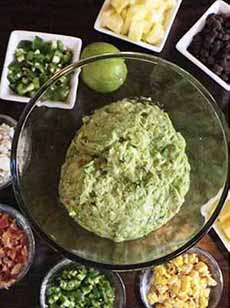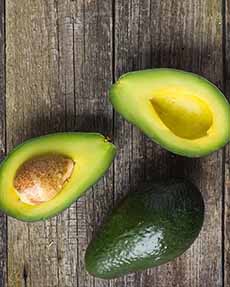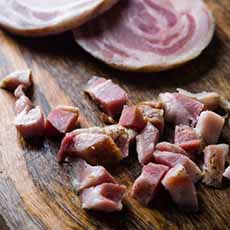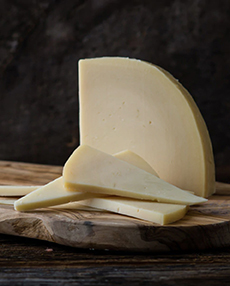|
The 29th of every month is National Gnocchi Day—in Argentina, where it’s spelled ñoqui, but pronounced the same as the Italian word, NYOH-kee).
People all over the country get together on the same day every month, at home or at restaurants—to eat gnocchi.
A nice idea: We just may start it in our own home.
Gnocchi is a pillow pasta, rolled into little pillowy dumplings.
The original Italian dish was made with flour and a potato filling, although the concept expanded to include pumpkin, ricotta, spinach, pumpkin and sweet potato.
Fusion cooks around Buenos Aires even make gnocchi filled with ham and cheese [source].
We’ll take a goat cheese and bacon gnocchi, please. What would you like in yours?
Today’s recipe is all about pumpkin gnocchi.
The planets are in alignment: October is National Pasta Month and National Pumpkin Month.
Add to that the 29th of the month, and eating pumpkin gnocchi must provide the eater with some kind of good fortune (or at least, the calories should disappear).
You can also celebrate with gnocchi soup (photo #2—here’s the recipe).
Before we get to the recipe, here’s how this quirky holiday began.
THE HISTORY OF GNOCCHI DAY
The story credits the occasion to the Italian immigration to Argentina (their descendants now make up about 50% of Argentina’s population.
This Argentine custom has been a tradition since the first wave of Italian immigrants migrated to the country in 1814 [source].
Since the 29th is almost the end of the month, many families were tight on cash as they waited for their next paycheck, which came on the first of the month.
Potatoes and flour are inexpensive ingredients that enabled the housewife to make a filling (and tasty!) meal.
Some say that the 29th commemorates a patron saint of Venice, San Pantaleon, who was canonized on the 29th, so on each month the 29th is celebrated as his feast day [source].
What About Good Luck?
As people from the “old country” brought their superstitions along with their recipes, a superstition accompanies the gnocchi.
It assures the eater that good luck may be on the horizon.
Eat gnocchi on the 29th of the month and place a coin or bill under your plate while you’re eating.
Then, take that money with you after the meal and carry it with you. It will bring you good luck.
A variation of the superstition says to donate the money to charity in order to reap the good fortune.
The tradition spread to neighboring Paraguay and Uruguay, and hey: Will someone please bring it up north to the U.S.A.?
> THE HISTORY OF GNOCCHI
HOW TO ENJOY PUMPKIN GNOCCHI
You can make the recipe below, from scratch.
You can buy fresh or frozen pumpkin gnocchi at the store, and simply make the butter sage sauce.
We chose the latter, but if you like the idea of making gnocchi from scratch:
Get the gnocchi kit from DeLalo (photo #4—it’s used in the recipe below).
Watch this tutorial on how to make gnocchi.
Either way, you need fresh sage. We have ways to use the extra sage (photo #3), below.
RECIPE: PUMPKIN GNOCCHI WITH BUTTER SAGE SAUCE
Ingredients
1 DeLallo Potato Gnocchi Kit
1 1/2 cups water
1/2 cup canned pumpkin
1 teaspoon salt
1 teaspoon nutmeg
2 teaspoons lemon zest
1/2 cup flour for dusting
1 1/2 cups butter
10 sage leaves
Balsamic vinegar, for drizzling
Parmigiano Reggiano cheese, for garnish
Preparation
1. MAKE the dough. Add the the package contents to a small mixing bowl and combine with the water, pumpkin, salt, nutmeg and lemon zest.
2. STIR with a fork until dough begins to form. Knead by hand until the dough no longer sticks.
3. TRANSFER to a lightly floured surface and form into a loaf shape. To prevent sticking, keep the surface and the dough lightly floured at all times.
4. USE a knife to cut dough into 1″ strips. Roll out each strip by hand into long ropes. Cut each rope into 1″ pieces. Optional: To create gnocchi’s signature ridges, press the back of a fork into each piece.
5. COOK the gnocchi. Bring a large pot of salted water to a boil. Add gnocchi and cook for 3-5 minutes. The gnocchi are finished once they float to the top.
Meanwhile…
6. MELT the butter in a saucepan on medium-low heat. Once melted, add the sage leaves and stir.
7. TOSS the finished, drained gnocchi with the butter sage sauce. On medium heat, cook them together for approximately 2 minutes.
Then, for the best taste and texture…
8. ALLOW the gnocchi to sit in the sauce once cooked for about 5 minutes. Drizzle with balsamic vinegar, sprinkle with shaved Parmigiano Reggiano cheese and serve.
USES FOR EXTRA SAGE
Beyond making the sage butter in this recipe, you can:
Chop and add to grains, omelets, pasta sauce, salads.
Cover it in olive oil, refrigerate and use for sautes.
Freeze it in oil for future use.
Garnish soups.
Infuse honey, oil or vinegar.
Use as a plate garnish.
Make compound butter to use for other sauces and spreads.
Make sage pesto.
Mix into stuffing.
|
|

[1] Fall comfort food: pumpkin gnocchi. In this photo, the gnocchi have been made with angled edges, instead of the traditional oval shape (photos #1, #2 and #4 © DeLallo).

[2] Add gnocchi to pumpkin soup. Here’s the recipe. Ut uses regular gnocchi in a soup made from pumpkin purée and chicken broth. But you can substitute pumpkin gnocchi for a “double pumpkin gnocchi soup.”
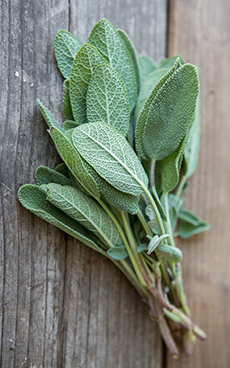
[3] Fresh sage has an herbal flavor that is slightly peppery, with hints of eucalyptus, lemon and mint. It is one of those herbs, like basil and rosemary, that provides “aromatherapy” just by inhaling the bunch (photo © Good Eggs).

[4] DeLallo’s Potato Gnocchi Kit. Get it here.

[5] Homemade gnocchi with marks made with the back of a fork (photo © Neco Garnicia | Stock Xchange).

[6] Be sure to buy plain pumpkin purée, not pumpkin pie mix, which has sugar and spices (photo © Jessica Gavin Photography).
|




